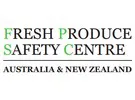 The Fresh Produce Safety Centre Australia & New Zealand (FPSC) is an industry-led, not-for-profit company established to enhance fresh produce safety across Australia and New Zealand. Under its 2025 Innovation Agenda, the FPSC has identified the audit/food compliance process as an area which has the potential to be improved and made both more efficient and cost-effective.
The Fresh Produce Safety Centre Australia & New Zealand (FPSC) is an industry-led, not-for-profit company established to enhance fresh produce safety across Australia and New Zealand. Under its 2025 Innovation Agenda, the FPSC has identified the audit/food compliance process as an area which has the potential to be improved and made both more efficient and cost-effective.
We wanted to answer the question: “What does fresh produce food safety compliance look like by 2025?” The current food safety compliance system (effectively an annual audit) is working reasonably well. However, the system does have its weaknesses and the purpose of this study was to uncover work that is being done locally and globally to deliver a more robust, efficient and cost-effective food safety compliance system that underpins consumer expectations, today and into the future.
While the audit process is generally working, and is valued by food businesses and regulators alike, there are challenges. A major and much publicised challenge is the issue of the cost, frequency and overlap of multiple audits required by customers, regulatory agencies and for market access. This issue has been addressed to some extent with the introduction of HARPS.
There is a challenge of moving from a perceived ‘one-day-per-year’ mentality and seeing the audit only as a compliance and market access mechanism – ‘a necessary evil’ – to an improved food safety culture across the business at any point in time. Organisations around the globe (particularly scheme owners) are addressing this issue with the objective of streamlining the audit process and outcomes. The aim is for business to view the annual audit day as no different to the food safety activity they undertake for the other 364 days of the year.
The auditor workforce, professional development issues, an ageing workforce, and barriers to entry combine to create a limited auditor pool. This is an issue not just in Australia and New Zealand. Some countries are attempting to deal with issues associated with an ageing auditor workforce, through training and incentive programs.
Old technology, the use of paper-based systems, and a failure to integrate information across the supply chain is another challenge. In the US, in a bid to increase food safety and meet stringent regulatory requirements (including the Food Safety Modernization Act and the Produce Safety Rule), there is a move towards more testing and increasing the frequency of audits in fresh produce.
In Europe, recognising the cost of multiple audits, risk-based assessments are being investigated, primarily increasing audit frequency for poor performers or commodities and processes with higher-risk. Unannounced audits, such as in the UK, and spot-check audits can play a role in improving compliance.
However, as even unannounced audits will only take place during a certain period of the year, these unannounced audits may not necessarily assist for the rest of the year. In other parts of Europe, risk-based approaches have been flagged: where those businesses with good audit performance and low-risk may have the requirements for annual on-site audits reduced and replaced with remote audits in some years. A further consideration is of the blended audit, where part of the audit is conducted off-site and part on-site, potentially allowing more time to be spent on-site and arguably leading to improved safety outcomes.
Technology is generating much activity around streamlining the audit process, but for GFSIbenchmarked schemes this option has been limited, as, until recently, the annual audit must be completed on-site. However, GFSI has recently published an extension to their 2020 benchmarking document which now allows for blended audits under particular circumstances using information and communications technology (ICT), for part of the audit process, as a voluntary option.
Some other technological solutions being instituted involve
moving data collection off old technology into the cloud, online self-assessment checklists and developing online dashboards for integrated supplier and customer management. Technology is also improving track-and-trace capability in the event of a food safety-driven recall or outbreak, plus the detection of food fraud/allergens,
which is a requirement of most, if not all, food safety schemes.
For the full report by the FPSC, please click here.
